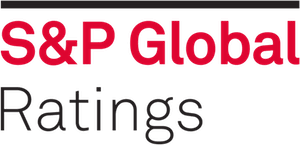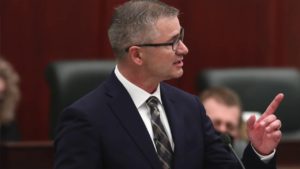After a decade of seeing its credit rating fall steadily from the coveted triple AAA rating to AA3, surging oil revenues have again lifted Alberta’s credit rating.
Nature of credit ratings
Credit ratings do matter to all governments which borrow on international and domestic capital markets. There is so much debt in the world that for large bond buying desks their analysts cannot focus on every credit in detail. These institutional investors count on rating agencies to undertake thorough, in some cases almost forensic work, to assure large institutional investors- think Vanguard, Swiss RE, J.P Morgan and the CPPIB- that the risks they are managing, including default risk, are fully understood and the debt/credit portfolios have risk limits understood by the bond buyers..
Credit ratings are first and foremost opinions. Of the Moody’s 10-page report on Alberta, two pages are legal disclosures pertaining to the nature of the rating.
CREDIT RATINGS ISSUED BY MOODY’S CREDIT RATINGS AFFILIATES ARE THEIR CURRENT OPINIONS OF THE RELATIVE FUTURE CREDIT RISK OF ENTITIES, CREDIT COMMITMENTS, OR DEBT OR DEBT-LIKE SECURITIES, AND MATERIALS, PRODUCTS, SERVICES AND INFORMATION PUBLISHED BY MOODY’S (COLLECTIVELY, “PUBLICATIONS”) MAY INCLUDE SUCH CURRENT OPINIONS. MOODY’S DEFINES CREDIT RISK AS THE RISK THAT AN ENTITY MAY NOT MEET ITS CONTRACTUAL FINANCIAL OBLIGATIONS AS THEY COME DUE AND ANY ESTIMATED FINANCIAL LOSS IN THE EVENT OF DEFAULT OR IMPAIRMENT. SEE APPLICABLE MOODY’S RATING SYMBOLS AND DEFINITIONS PUBLICATION FOR INFORMATION ON THE TYPES OF CONTRACTUAL FINANCIAL OBLIGATIONS ADDRESSED BY MOODY’S CREDIT RATINGS. CREDIT RATINGS DO NOT ADDRESS ANY OTHER RISK, INCLUDING BUT NOT LIMITED TO: LIQUIDITY RISK, MARKET VALUE RISK, OR PRICE VOLATILITY. CREDIT RATINGS, NON-CREDIT ASSESSMENTS (“ASSESSMENTS”), AND OTHER OPINIONS INCLUDED IN MOODY’S PUBLICATIONS ARE NOT STATEMENTS OF CURRENT OR HISTORICAL FACT. MOODY’S PUBLICATIONS MAY ALSO INCLUDE QUANTITATIVE MODEL-BASED ESTIMATES OF CREDIT RISK AND RELATED OPINIONS OR COMMENTARY PUBLISHED BY MOODY’S ANALYTICS, INC. AND/OR ITS AFFILIATES. MOODY’S CREDIT RATINGS, ASSESSMENTS, OTHER OPINIONS AND PUBLICATIONS DO NOT CONSTITUTE OR PROVIDE INVESTMENT OR FINANCIAL ADVICE, AND MOODY’S CREDIT RATINGS, ASSESSMENTS, OTHER OPINIONS AND PUBLICATIONS ARE NOT AND DO NOT PROVIDE RECOMMENDATIONS TO PURCHASE, SELL, OR HOLD PARTICULAR SECURITIES. MOODY’S CREDIT RATINGS, ASSESSMENTS, OTHER OPINIONS AND PUBLICATIONS DO NOT COMMENT ON THE SUITABILITY OF AN INVESTMENT FOR ANY PARTICULAR INVESTOR.
The two pages of legalese is important and necessary to protect the agency against lawsuits. All credit rating agencies came under stern criticisms in the wake of the global financial crisis over their ratings of asset-backed securities. Agencies rate tens of thousands of securities issued by government, corporations, and financial institutions. Consequently they have huge investments in both their people and technology systems. They earn their revenue mainly from institutional investors like pension funds and sovereign wealth funds..
Rating agencies are profitable corporations
Credit ratings agencies are not public utilities. Moody’s and Standard and Poor’s are privately owned . In the case of Moody’s, “in 2000, Dun & Bradstreet spun off Moody’s Corporation as a separate company that was listed on the NYSE. In 2007, Moody’s Corporation was split into two operating divisions, Moody’s Investors Service, the rating agency, and Moody’s Analytics, with all of its other products. It was included in the Fortune 500 list for the first time in 2021.” “Moody’s Corporation (MCO) is the holding company that owns both Moody’s Investors Service, which rates fixed income debt securities, and Moody’s Analytics, which provides software and research for economic analysis and risk management.
The principal owners of MCO are Warren Buffet’s Berkshire Hathaway (13.47 per cent), followed by huge institutional investors Vanguard, TCI Fund Management, Blackrock, State Street, and Canadian investment manager Fiera Capital (3.06 per cent). In 2022, Moody’s booked $5.5-billion U.S. in revenue and profit of $1.4-billion U.S.

S&P, like Moody’s has a storied history. S&P began in 1860 with Henry Varnum Poor’s publication on railroad prices and The Standard Statistics Bureau, founded in 1906. It is owned by S&P Global, a publicly traded corporation. S&P is also well known as the producer of equity market indices such as the S&P 500.
Currently the top shareholders in S&P Global are huge institutional investors Vanguard Group (8.9%) Blackrock (5.19%) and other major financial intermediaries including State Street Global Advisors, TCI Fund Management, Wellington, Fidelity, Geode Capital Management, and JP Morgan Asset Management. These are investors who take seriously both the work of S&P as a research organization but as a profitable business. The company booked $8.3-billion revenue in 2021 and a mouth-watering $2.8-billion in comprehensive income.
Moody’s and S&P operate in an oligopolistic industry and they dominate the industry. The other two players are Fitch Ratings and DBRS Morningstar who are much smaller by comparison.
Moody’s report
On 31 January Moody’s released its pre-budget opinion of Alberta’s creditworthiness to pay back its debt.
The assessment highlighted the rapid change in Alberta’s fiscal fortunes with the turnaround to budgetary surpluses from projected deficits and accumulation of debt.
Strengths
The province’s fiscal strengths according to Moody’s are its strong liquidity position (e.g., Heritage Fund). future fiscal surpluses, a “moderate debt burden,” and a competitive tax regime which gives the province flexibility to obtain more revenue. A competitive tax regime provides “the province with greater fiscal capacity and an attractive location for individuals and businesses seeking a tax advantage.”
The challenges to Alberta’s creditworthiness are dependence on oil prices and the “carbon transition risk, high inflation and “macroeconomic uncertainties” (which all borrowers face). An additional plus for Alberta are the predictable and sizeable transfers from the federal government.
Of note is a comment on the Heritage Fund’s investment portfolio of equites and alternative investments which expose the province to asset value and performance fluctuations. In the Heritage Fund’s most recent report, the 12-month rolling returns was -0.9 per cent. Moody’s also mentioned the reduction in the amount of cash promised to be allocated to the Heritage Fund. However, the agency predicted continued growth for the fund from anticipated future surpluses.
Concerning Alberta’s debt level, Moody’s observed the rapid deceleration in the accumulated debt with the sharp reversal of the province’s fiscal situation. However inflationary pressures will feature in future union negotiations as settlements, negotiated during the era of UCP’s fiscal restraint measures, expire.
Challenges
According to the ratings agency, Alberta’s ESG credit impact score is moderately negative “reflecting highly negative exposure to environmental risks, neutral to low exposure to social risk and neutral to low governance risk.” This rating is “considered as having limited impact on the current rating with greater potential for future negative impact over time.”
The E issuer profile score is highly negative (E-4) which reflects exposure to carbon transition risk and elevated exposure to physical climate risks. Alberta is the nation’s biggest oil producer which contributes to a significant portion of GDP and revenues, and therefore Alberta is more susceptible to carbon transition risk than most other provinces and global regional peers as decarbonization efforts and the transition towards cleaner energy continues. Although Alberta imposes a price on carbon which must meet federal requirements, changes in federal policy decisions could create discrepancies between provincial and federal policies. At the same time, exposure to physical climate risks is elevated given unpredictable weather events including periodic droughts and wildfires which can cause significant economic damage. (Emphasis added)
Assessment
Over the years the assessment of Alberta’s fiscal strengths and weaknesses is basically unchanged. What will be more determinative in the future is the E-4 highly negative environmental rating. This assessment belies the frequently heard government and industry nostrums about “responsible energy development.” When the credit ratings agencies come to

better understand the scope of the oilsands liabilities and the possibility of the province being forced to assume some or all the liability of the tailings ponds, a lower rating is inevitable.
Particularly concerning in this regard are the efforts made by Premier Danielle Smith as a lobbyist for Alberta Enterprise group in promoting the RStar program which blurs the line between industry’s legal responsibilities for clean-up and corporate welfare to the conventional oil industry. This program has now been widely criticized in the media.
Until the provincial government finds a way to get off its addiction to royalty revenue as the primary source of income, the province’s credit rating will continue to move up and down with the price of oil. The recent retreat from saving more in the Heritage Fund, noted in the report, and the bias to pre-election spending does not augur well for the long term.
Is carbon capture a long-term solution?

The province continues to bet on the long-term production of oilsands with the federal government lending its financial support through tax credits for carbon capture and underground storage. This program is the brainchild of the Pathways Alliance representing six large oilsands producers. A recent media report questions both the cost of and time to build CCUS facilities. The article referenced a critical report from the Winnipeg-based International Institute for Sustainable Development. Unlike CCUS for cement and steel production which do not produce products which add to GHG emissions, the extension of taxpayers’ funds to the energy industry simply obscures the economic viability of oilsands production.
That said, don’t be surprised if we see another corporate hand-out from Alberta taxpayers to Alberta’s biggest companies when Budget 2023 comes down on 28 February.